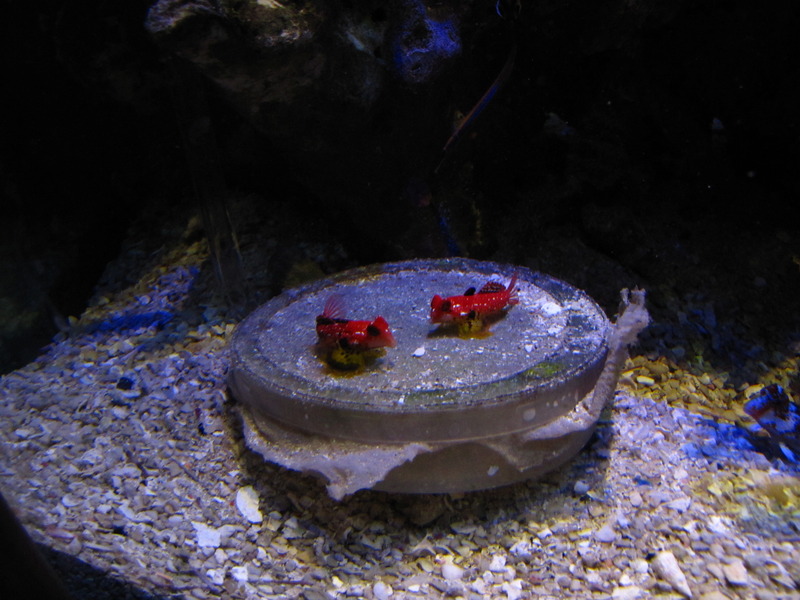Navigation
Install the app
How to install the app on iOS
Follow along with the video below to see how to install our site as a web app on your home screen.
Note: This feature may not be available in some browsers.
More options
You are using an out of date browser. It may not display this or other websites correctly.
You should upgrade or use an alternative browser.
You should upgrade or use an alternative browser.
A discussion on immunity
- Thread starter Paul B
- Start date
- Tagged users None
Humans can eat pretty much everything because that is how we evolved. For millions of years early humans ate anything they could get their hands on. Reef fish have been in the same ecosystem for millions of years without terrestrial plants. They lack the ability to fully digest these structures. Another example is the common house cat. They evolved from big cats that lived on the interior plains of the continents. Even though they love to eat fish, you should not feed cats a lot of fish because they cannot fully handle them. Something in the fish leads to a thiamine deficiency. Same with dogs and grains. Ever see a pack of wolfs attack a corn field? They can handle some but it is not good for the long run. Here is a link to another discussion, with references, about terrestrial plants and garlic. Go to post #14..http://www.reefcentral.com/forums/showthread.php?t=2213228 .
- Joined
- Nov 17, 2014
- Messages
- 55
- Reaction score
- 36
This thread is one of the best out there and it's great to hear civil discourse on both nutrition/immunity and QT.
The problem with QT threads on most forums is the militancy with which people push it. The vast majority of people new to the hobby don't find the forums until their tank is up and (over) stocked and they have algae issues or can't keep a fish alive.
I kept a small tank with an Oscar for many years, but came into reefing as a 100% noob.
I am extremely glad to have found Paul's info and a few other folks out there too.
The feeding live and frozen foods to promote immunity and slime coats is one of the best things I took away.
I don't live near the water but to me it was obvious that if our tanks depend on bacteria I wanted it as diverse as possible so I would get rubble from many different LFS and other reefers to introduce its bacteria to my tank.
Paul and others may have a boatload of experience but much of what they're teaching is simple stuff not rocket science.
I look at the big forum's section for noobs and there is so much TERRIBLE advice. It's enough to make people quit the hobby.
The problem with QT threads on most forums is the militancy with which people push it. The vast majority of people new to the hobby don't find the forums until their tank is up and (over) stocked and they have algae issues or can't keep a fish alive.
I kept a small tank with an Oscar for many years, but came into reefing as a 100% noob.
I am extremely glad to have found Paul's info and a few other folks out there too.
The feeding live and frozen foods to promote immunity and slime coats is one of the best things I took away.
I don't live near the water but to me it was obvious that if our tanks depend on bacteria I wanted it as diverse as possible so I would get rubble from many different LFS and other reefers to introduce its bacteria to my tank.
Paul and others may have a boatload of experience but much of what they're teaching is simple stuff not rocket science.
I look at the big forum's section for noobs and there is so much TERRIBLE advice. It's enough to make people quit the hobby.
Its called marketing. He needs to sell his product to make a living. At least he is putting out a product that is good for the fish. If your are not going to make your own fish food, then LRS is the way to go.
Our foods have evolved over the past 5 years due to my ability to network with folks in public aquaria and other educated researchers. When we first started making foods our Reef blend DID in fact have things like garlic, carrots, and broccoli flowers in the blend. As I became more educated about marine diets from these folks I was able to change my foods for the better. For example we deleted garlic and carrots from the blend well over a year ago, at least. I agree 100% that nori has FAR more beneficial nutrients and is much better for marine fish than any terrestrial veggie. @laga77 nailed the reasons why perfectly in his post above. However, we find that a lot of facilities do in fact supplement with broccoli, after it is either blanched or frozen. (These steps are necessary to help break down the cellulose in the broccoli and aids in digestion.)
I was going to delete broccoli all together last year but I didn't want to "fix what isn't broke" especially when we have so many good success stories from using the foods. (Shameless plug, but there has been some pretty awesome stuff happening as of late: http://www.larrysreefservices.com/testimonials.html ) In fact we have one client who maintains a 16,000 gallon commercial aquarium and they documented that HLLE was reversed after they started feeding our Herb blend. Now I'm not saying the broccoli was the sole cause, but it also goes along with this excerpt from an article I had saved a while back. I apologize for not giving credit to the original author and if I can find the link to the article I will edit the post.
The following was copied from an article I found online and I saved it:
"The occurrence of head and lateral line erosion, (HLLE) is a common problem with certain reef fish, particularly tangs and surgeonfish. We experienced and epidemic amoung our blue tang (Acanthurus coeruleus) population six years ago,(1989), in our 25,00 gallon reef exhibit here at the Indianapolis Zoo-Aquarium. Other surgeonfish were affected, but the angelfish in the exhibit were not.
Water quality was dismissed as a likely cause of the problem. Good water quality was maintained by a combination of use of sand filters, ozone, and periodic water exchanges with saltwater mixed from Instant Ocean sea salt. We do not use activated carbon. Normal nitrate levels were maintained in the range of 15 to 20 milligrams per liter ,(mg/l), Nitrate Nitrogen , (N03-N). pH averaged 8.25 and salinity was 32 parts per thousand, or a specific gravity of 1.023. At the onset of the HLLE, salinity was dropped to inhibit parasite reproduction, in case this was the cause. The erosion continued and salinity was eventually brought back up to 1.023.
In reviewing other possible causes for theis malady we next focused on possible dietary deficiencies, because no obvious pathogens were found. Our fish were receiving a varied diet including romaine lettuce and spinach. Initially we tried elevating the level of vitamin C by incorporating a supplement into a gelatin based food, but this had no effect. We next considered supplementing the level of vitamin A. According to the Applied Nutrition and Diet Therapy, page 852, "One of the most important functions of vitamin A is to maintain the integrity of the epithelial cells....As a result, surfaces of the skin and membranes lining all passages that open to the exterior of the body, as well as glands and their ducts, are susceptible to disease." This was the basis for trying increased amounts of vitamin A after the vitamin C supplement by itself failed to produce results. It was our feeling that the laining of the lateral line ducts had deteriorated.
We were concerned with the possible toxicity of high vitamin A levels that has been reported for certain animals. Upon reviewing the nutritional value of different types of lettuce, we found them to be very low in nutrients and began researching the nutritional value of other green vegetables. Spinach appeared to be higher than lettuce, but it does not hold up well in sea water. Carrots were found to be a good natural food, but they had to be shredded and were quite messy to feed. Still, we fed carrots solely for six to eight weeks and observed a resolution of the HLLE. A more complete literature review made broccoli an obvious choice. It is well balanced in many vitamins in addition to the high level of vitamin A, and also has other features that make it acceptable. It holds up very well in the aquarium. Many fish like the flowerettes when they are first added. Only the larger fish could break open the woody layer on the stalks, but once opened small fish feed on the softer pulp material. We replaced the carrots with broccoli, and we are currently using it as a well-balanced maintenance diet.
After replacing the lettuce diet with first carrots and then fresh broccoli, the HLLE improved to the extent that only a few scars remained on the most severely affected fish. After nearly eight years in the exhibit, most of the original batch of blue tangs are still alive. Broccoli, supplemented with peas and other prepared foods, dominates the diet. No HLLE sypmtoms are evident in any of the fish in the exhibit."
End quote.
So adding a few tablespoons of broccoli flowers to our Reef and Herb blend is really not a big deal when considering it is a 200 pound batch, and several are produced daily.
I just can't help but think that you still have a tiny share of the overall hobby fish food market.
I've very happy with my "tiny" piece of the pie. With 425 retailers around the world, many commercial service companies using our foods, plus more aquaculture facilities coming on board the pie is getting bigger.
Great discussion folks and I can't promise I'll be able to be so wordy the rest of the weekend with family stuff coming up!
Last edited:
Larry, it is my opinion that although too much vitamin A is toxic to us, I think you can't overdose a fish with the vitamin. I didn't come about this overnight, it came to me while I was diving and watching large fish eat each other. All fish have a liver and a fishes liver is huge. In some fish like a shark the liver is used as buoyancy as oil is lighter than water and the liver is almost all oil, hence Cod Liver oil.
If a fish eats a 100lb fish it is getting about 12 pounds of oil. If that doesn't kill it, vitamin A can't be toxic to fish. I sometimes soak pellets in fish oil to give to my fish and sometimes I did that for years. I even inject guppies, goldfish and grass shrimp with pure vitamin A to feed to larger fish.
HLLE is not really a disease as you said, nothing can be found wrong with the fish, but it does not occur in the wild and schooling fish get it more than other fish, but any fish can get it. There have been many theories from leaking electricity to carbon fines, to improper diet to Rap music. I have my own ideas and I have also cured it.
It comes from captivity but I feel the exact cause is how the fish are built. All fish have a lateral line which is a line of tiny pores in the side of the fish that are each connected to a nerve that goes directly to a fishes brain and allows the fish to sense any object that is near it. The lateral line is the reason fish never crash into the glass sides of a tank even though "they can't see it". Even in total darkness fish don't crash. You will never catch a fish with a net by just chasing it. You have to cheat and trap it against something or use two nets. Fish that lose an eye get along just fine and some fish don't even have eyes. Fish can dive into a coral head and never get stuck or scratched.
Whenever we jump into the water at a beach, every fish with in quite a long distance knows we are there including those nasty sharks. The only reason we don't always get eaten is because they are laughing at our silly Speedo's.
The fish gets input from it's lateral line 24/7. Now think about this. HLLE always affects the lateral line starting at the beginning of the line at their heads and travels back.
In a tank, fish, especially schooling fish like tangs get signals constantly through their lateral line that they are close to something. But they can't see it. It's like if we kept hearing someone creeping up on us but never saw anyone. We would go nuts. Maybe fish go nuts, I don't know, but I feel their lateral lines get constantly inundated or flooded with stray signals and get overloaded. Remember fish are usually in the open sea with nothing around them but an occasional fish. When they sense a fish, a rock, or an Oldsmobile they know not to crash into it. But the sides of a tank are always there and they can't get away.
I think that is also the reason we can't keep pelagic sharks in a square tank. Sharks have a much more sensitive sensory system than bony fish.
I also think that is the reason tangs get ich so easy. A tang is a schooling fish and I assume their lateral line is more sensitive than other fish so it can cruise very close to it's brothers.
Look at one of my old log book entries. I cured a French Angel of HLLE using vitamin A. I am not sure what the vitamin a or your broccoli did but I thin the way a fish is designed is what causes HLLE in captive fish.
I also put this in my book.

If a fish eats a 100lb fish it is getting about 12 pounds of oil. If that doesn't kill it, vitamin A can't be toxic to fish. I sometimes soak pellets in fish oil to give to my fish and sometimes I did that for years. I even inject guppies, goldfish and grass shrimp with pure vitamin A to feed to larger fish.
HLLE is not really a disease as you said, nothing can be found wrong with the fish, but it does not occur in the wild and schooling fish get it more than other fish, but any fish can get it. There have been many theories from leaking electricity to carbon fines, to improper diet to Rap music. I have my own ideas and I have also cured it.
It comes from captivity but I feel the exact cause is how the fish are built. All fish have a lateral line which is a line of tiny pores in the side of the fish that are each connected to a nerve that goes directly to a fishes brain and allows the fish to sense any object that is near it. The lateral line is the reason fish never crash into the glass sides of a tank even though "they can't see it". Even in total darkness fish don't crash. You will never catch a fish with a net by just chasing it. You have to cheat and trap it against something or use two nets. Fish that lose an eye get along just fine and some fish don't even have eyes. Fish can dive into a coral head and never get stuck or scratched.
Whenever we jump into the water at a beach, every fish with in quite a long distance knows we are there including those nasty sharks. The only reason we don't always get eaten is because they are laughing at our silly Speedo's.
The fish gets input from it's lateral line 24/7. Now think about this. HLLE always affects the lateral line starting at the beginning of the line at their heads and travels back.
In a tank, fish, especially schooling fish like tangs get signals constantly through their lateral line that they are close to something. But they can't see it. It's like if we kept hearing someone creeping up on us but never saw anyone. We would go nuts. Maybe fish go nuts, I don't know, but I feel their lateral lines get constantly inundated or flooded with stray signals and get overloaded. Remember fish are usually in the open sea with nothing around them but an occasional fish. When they sense a fish, a rock, or an Oldsmobile they know not to crash into it. But the sides of a tank are always there and they can't get away.
I think that is also the reason we can't keep pelagic sharks in a square tank. Sharks have a much more sensitive sensory system than bony fish.
I also think that is the reason tangs get ich so easy. A tang is a schooling fish and I assume their lateral line is more sensitive than other fish so it can cruise very close to it's brothers.
Look at one of my old log book entries. I cured a French Angel of HLLE using vitamin A. I am not sure what the vitamin a or your broccoli did but I thin the way a fish is designed is what causes HLLE in captive fish.
I also put this in my book.

I have 53 fish in 6 tanks all set up in the last five years. MY 120G FOWLR was a year old last week and was set up from dry rock and sand. It took 12 days to cycle and I started putting fish into it. The longest QT for any of the fish was 5 days. That was the PBT back in April. The SG from the LFS was 1.012. I run all my tank at 1.026, so I took a couple of extra days to acclimate the tang. The last fish in was a Golden Hawkfish which I did not QT at all. I`m sorry but it does not take years to set up a tank without QT. It is how you take care of the fish.I think we could focus on many of your ideas as being an enhancement to using QT instead of a replacement for it. As you said, it takes years for a tank to have the diverse biology necessary to make your method work without QT.
I'm going to bet you have been very lucky. I used to think the same thing. Maybe your lucky were you live. I have tanks set up for years with no issues, I feed them all live foods. I have lost hundreds of dollars of fish in the last three months due to velvet. Now I have 6 qt tanks.I have 53 fish in 6 tanks all set up in the last five years. MY 120G FOWLR was a year old last week and was set up from dry rock and sand. It took 12 days to cycle and I started putting fish into it. The longest QT for any of the fish was 5 days. That was the PBT back in April. The SG from the LFS was 1.012. I run all my tank at 1.026, so I took a couple of extra days to acclimate the tang. The last fish in was a Golden Hawkfish which I did not QT at all. I`m sorry but it does not take years to set up a tank without QT. It is how you take care of the fish.
I didn't say it takes five years to set up a tank before you start to put fish in. I said it could take five years to get the biological diversity necessary to have a stable tank. That five years is just a guestimate with a lot of variables but the newer a tank is, the less biodiversity it has. Even after 45 years my tank continues to diversify and add more life forms. To me a stable tank is a tank where "all" the animals in it live to their natural life span and all the paired creatures are spawning. I assume it could happen in less time but I arbitrarily picked five years.
In a five year old tank you can't know if the animals are living to their natural lifespan because the lifespan of even a hermit crab is around 12 years. I only know that because mine were 12 years old, they could live longer.
This pair lived for 12 years.
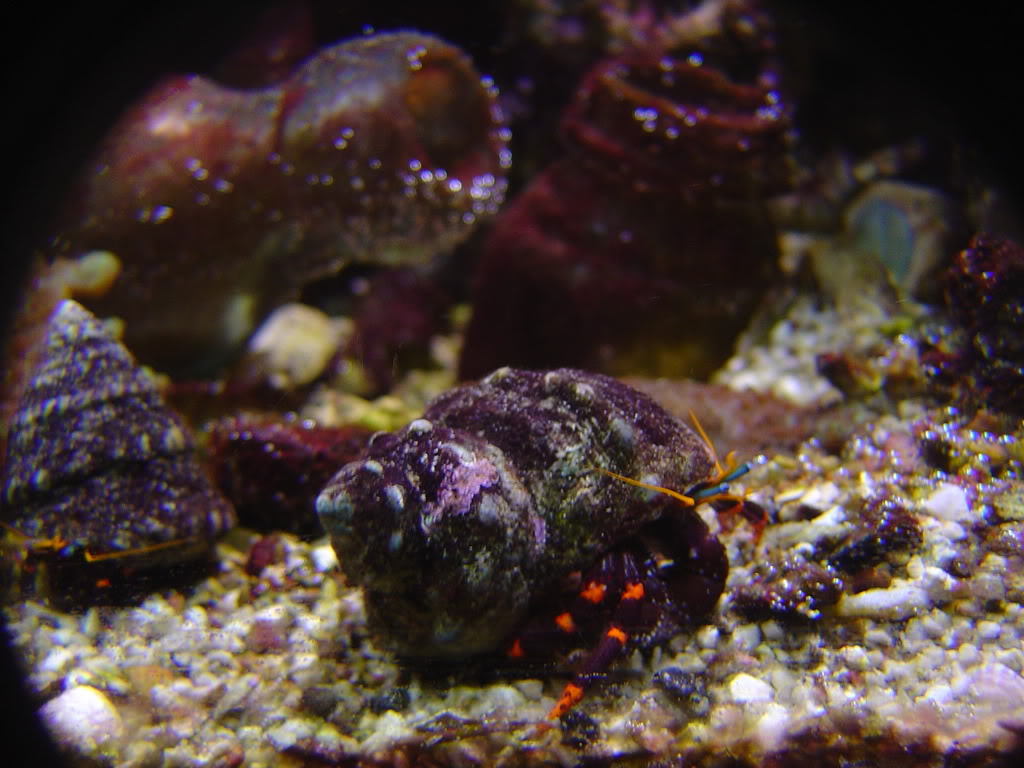
These spawning fireclowns are about 25 years old and still going.
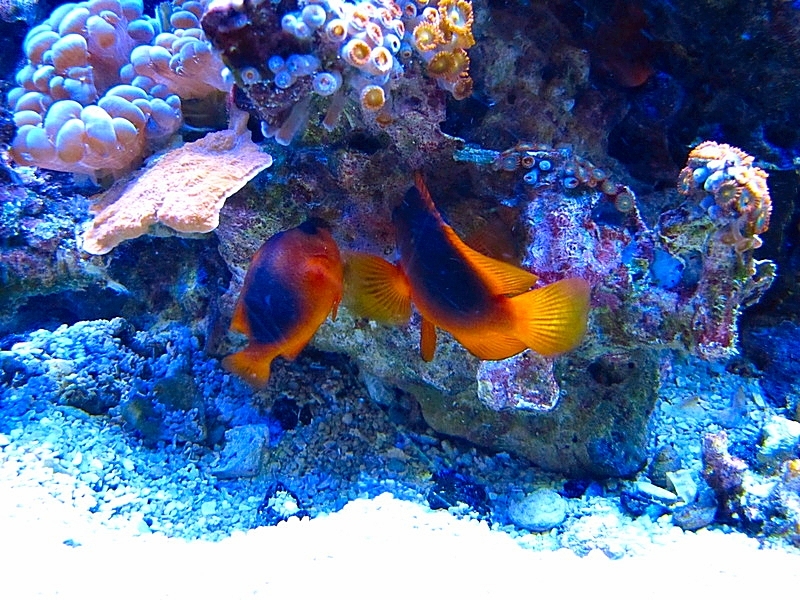
This mulm growing under my clingfish took many years to form and it is still growing. It is on the side of my tank, I turner the picture and lightened it because it is in the dark. It is full of tubeworms, starfish and other microscope life forms
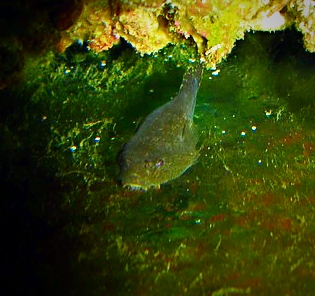
In a five year old tank you can't know if the animals are living to their natural lifespan because the lifespan of even a hermit crab is around 12 years. I only know that because mine were 12 years old, they could live longer.
This pair lived for 12 years.

These spawning fireclowns are about 25 years old and still going.

This mulm growing under my clingfish took many years to form and it is still growing. It is on the side of my tank, I turner the picture and lightened it because it is in the dark. It is full of tubeworms, starfish and other microscope life forms

Last edited:
4FordFamily
Tang, Angel, and Wrasse Nerd!
View BadgesStaff member
Super Moderator
Partner Member 2024
Excellence Award
Reef Tank 365
Expert Contributor
Article Contributor
Hospitality Award
INDMAS Member
My Tank Thread
Yeah ditto. Took me ten years before I figured it all out and stopped cutting corners. Lots of mistakes and thick headednessI'm going to bet you have been very lucky. I used to think the same thing. Maybe your lucky were you live. I have tanks set up for years with no issues, I feed them all live foods. I have lost hundreds of dollars of fish in the last three months due to velvet. Now I have 6 qt tanks.
I'm going to bet you have been very lucky. I used to think the same thing. Maybe your lucky were you live. I have tanks set up for years with no issues, I feed them all live foods. I have lost hundreds of dollars of fish in the last three months due to velvet. Now I have 6 qt tanks.
I have about 22 fish in my 100 gallon tank. None have been quarantined and none have ever been sick. The tank will be 46 years old in March. I am sure I am very "lucky"
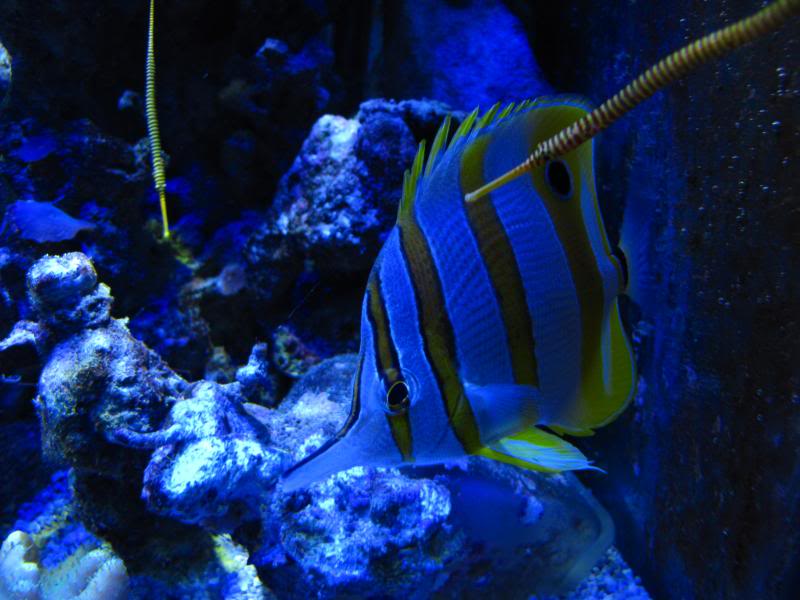
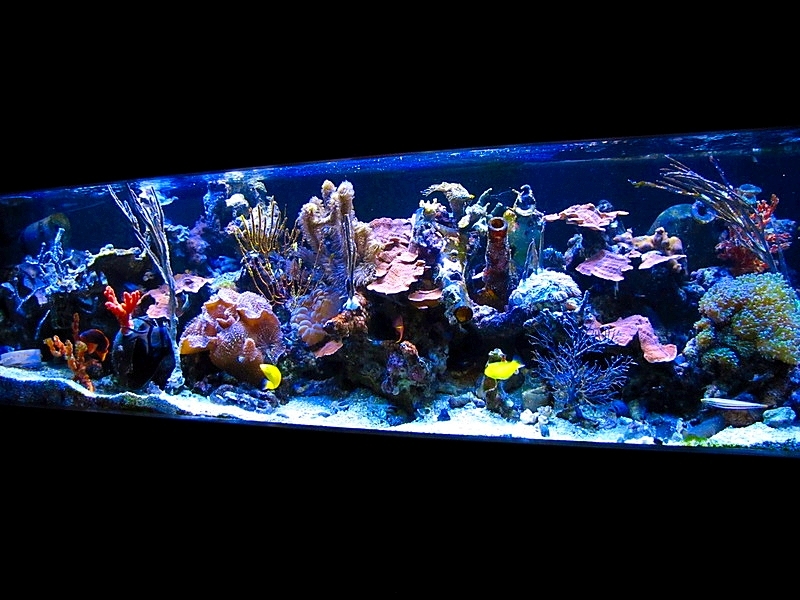
I have been doing this for a long time. I started in 1986 and went to mid 90`s. I had mated clowns 25 years ago when most people couldn't`t keep a fish alive for 6 months. Took 20 years off and jumped back in. It takes a lot of work and a lot of time. It is not cutting corners to figure new ways to do things. The biggest part of the equation is stability. If you think it takes years then thats fine. It does not. I like to do things differently to see what can be done. When I started there was no internet, you were pretty much on your own. There will be no advances in this hobby if everyone does the same things the same way.
Paul, have you ever changed out the sand in all those years?
How do you do your water changes?
I use dolomite gravel, it is the same as it was in 1971, I never changed it but I did add more in about 1979 when I transferred everything to a larger tank.
I do water changes like everyone else. I take out about 20 gallons and put in new water but I only change it 4 or 5 times a year. The last time I changed water was before Thanksgiving.
My tank started in this 40 gallon. I am still using that gravel and that is the original water. Some is still in my tank because I never emptied it as it never crashed. I did a few times add Clorox in the beginning to kill parasites, bristle worms and a few other things that grew from the Long Island Sound. But that was way before I learned how to keep everything immune. I didn't even change it after the Clorox. I just added Chlorine remover and put the fish back in. I didn't invent that, that was Robert Straughn, my mentor and the author of "The Salt Water Aquarium in the Home" He wrote that in the fiftees.
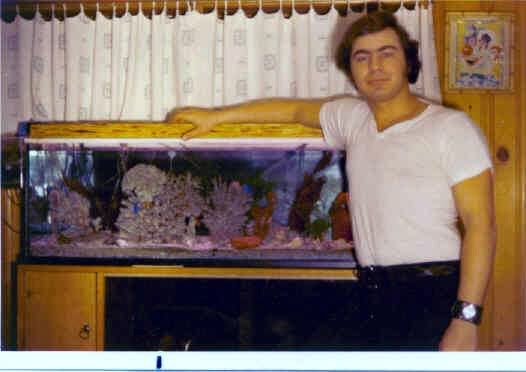
I spawned these blue devils in 1972. This male is over his nest of eggs in that barnacle shell. That is how I learned about live blackworms. 6 weeks after I started feeding them, those fish spawned.
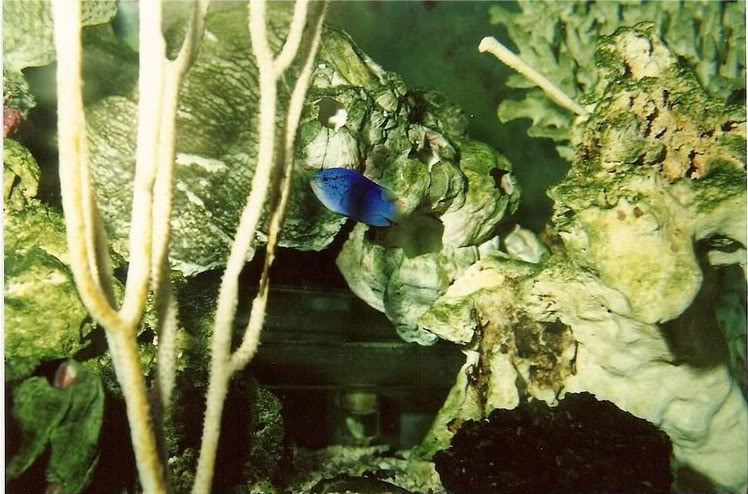
Here are his eggs. I couldn't raise them then because no one sold rotifers that I knew of.
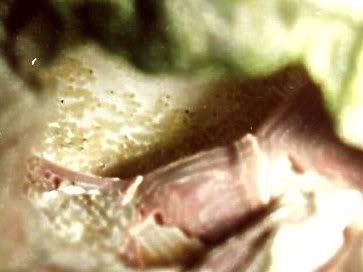
These baby octopus hatched in my tank probably in the 80s.
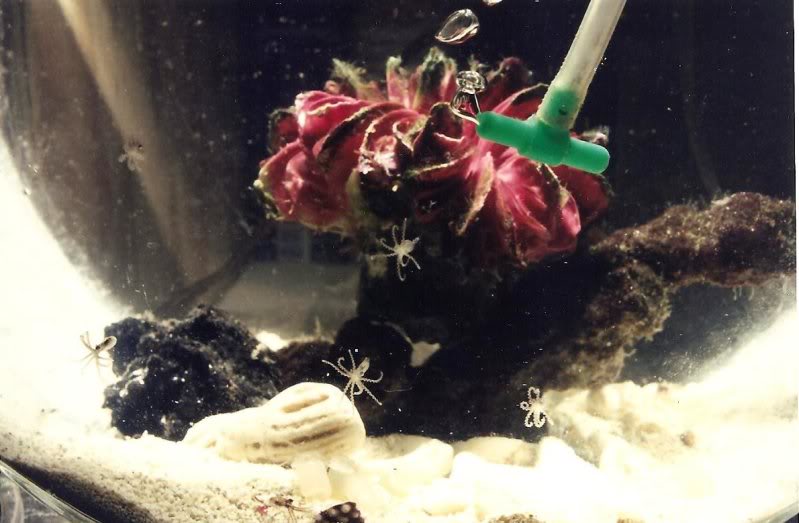
These coral banded shrimp spawned every few weeks and lived 7 years in the 70s.

These mandarins still spawn constantly.
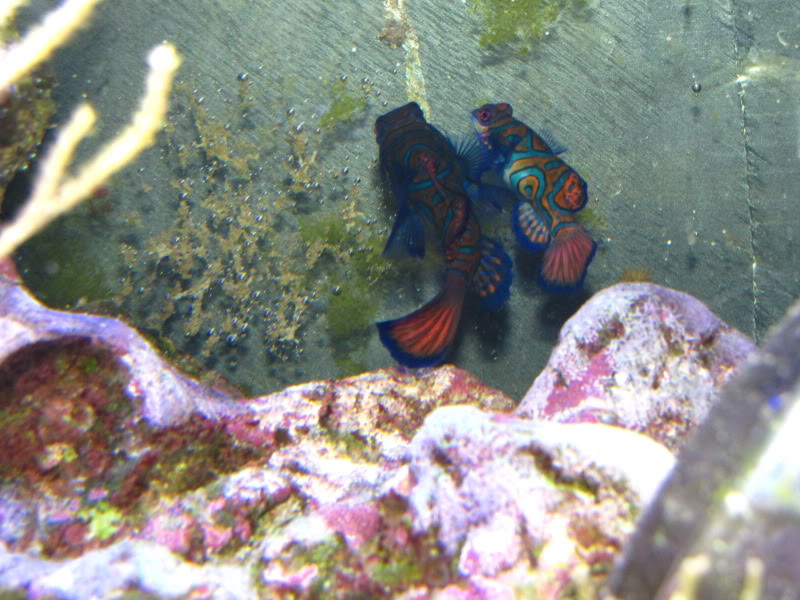
As do these pipefish
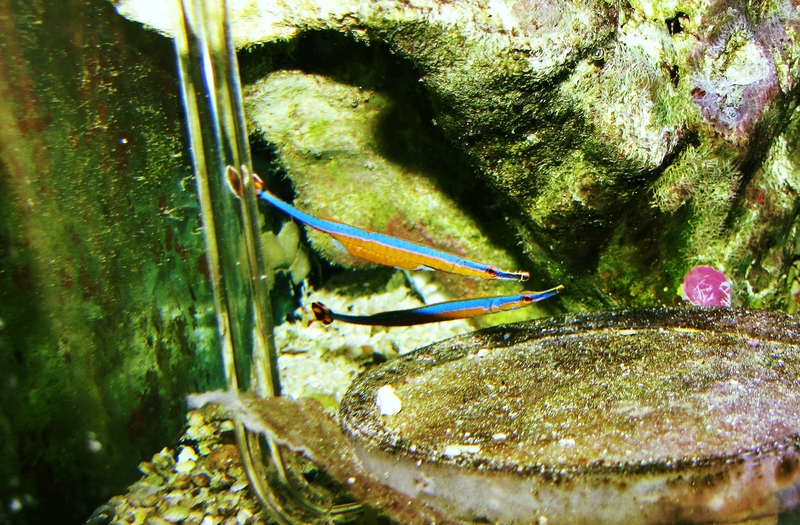
You can see her eggs just above her
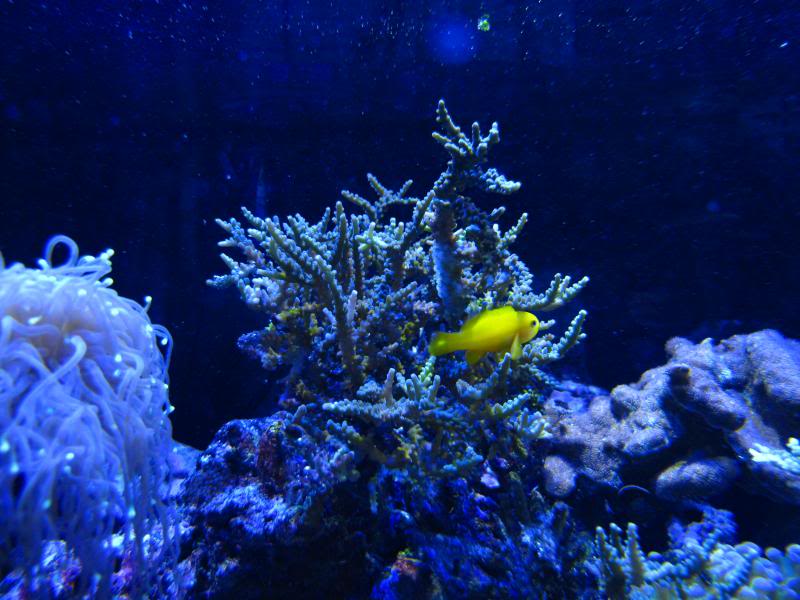
12 year old watchman gobi with her eggs. This is what I mean about healthy fish, they all spawn. My bangai's, and ruby red dragonettes are also spawning.
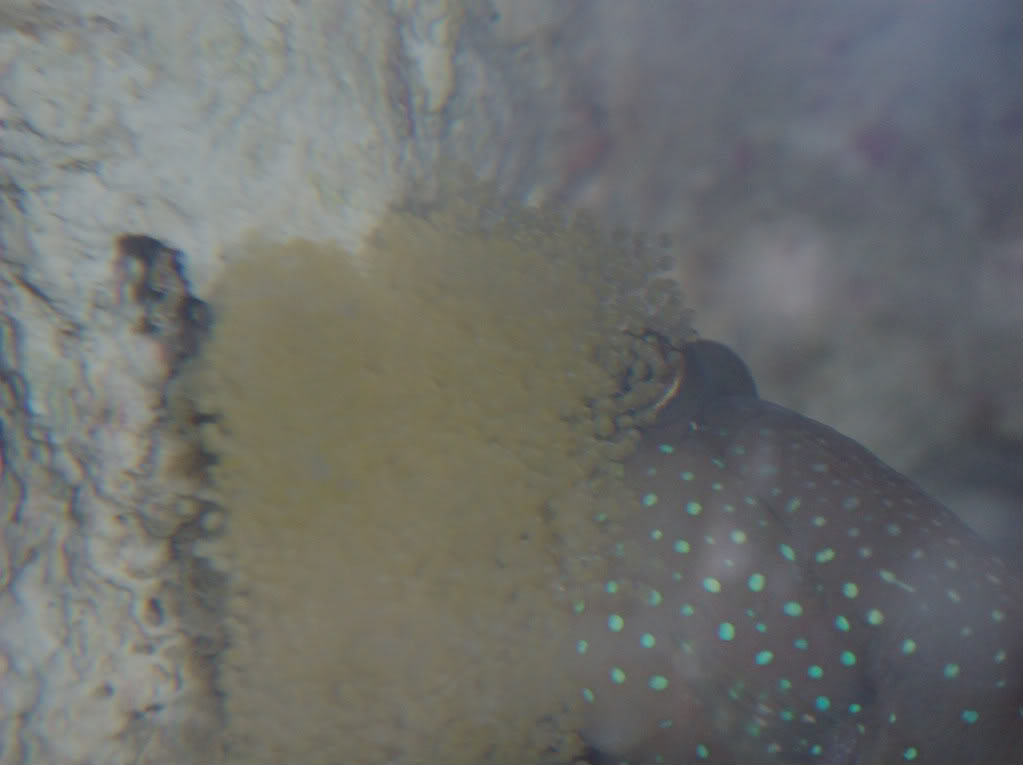

Here are his eggs. I couldn't raise them then because no one sold rotifers that I knew of.

These baby octopus hatched in my tank probably in the 80s.

These coral banded shrimp spawned every few weeks and lived 7 years in the 70s.

These mandarins still spawn constantly.

As do these pipefish

You can see her eggs just above her

12 year old watchman gobi with her eggs. This is what I mean about healthy fish, they all spawn. My bangai's, and ruby red dragonettes are also spawning.

Immunity and spawning go hand in hand. It takes a lot of calories to produce eggs and it takes a lot of calories to produce slime with antibodies in it that constantly washes off. If your paired fish are not spawning, they probably are also not immune and not very healthy. As I said hundreds of times, spawning fish are healthy fish. I didn't make this up, the fish did.
Merry Christmas.

Merry Christmas.

Lionfish Lair
Renee
View BadgesExcellence Award
Photo of the Month
Showcase Editor
Article Contributor
Reef Squad Emeritus
My Aquarium Showcase
There is definitely such a thing as vitamin A hypervitaminosis in fish.
Similar threads
- Replies
- 4
- Views
- 84
- Replies
- 7
- Views
- 442
- Replies
- 6
- Views
- 83
- Replies
- 4
- Views
- 252








